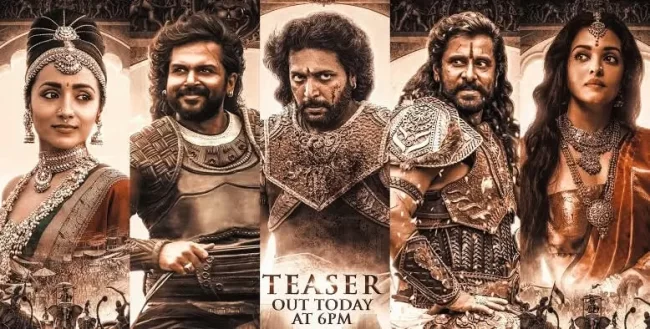Ponniyin Selvan—is it the Tamil version of Game of Thrones? The same query was recently put to Mani Ratnam, the maestro himself. Considering the publication dates of George RR Martin’s and Kalki Krishnamoorthy’s books, it may have been, but it is not merely a light-hearted response.

In 1951, Ponniyin Selvan began publishing in the monthly magazine Kalki. A five-part novel series comprising all the parts of the series was published in 1955. Indra Neelamegam translated the series into English in 1993. A Game of Thrones, the first novel in George RR Martin’s A Song of Ice and Fire series, was published in 1996. This is not to claim that PS served as inspiration for Game of Thrones, but rather to highlight our inborn awe for all things American. While we rarely consider the notion that our works may have influenced people in other nations, we quickly acknowledge the likelihood of the opposite.

Both the series begin with a celestial warning of impending doom. The comet Dhoomketu makes an appearance in Ponniyin Selvan, which is an omen of trouble. Similar to this, once Daenerys’ dragon eggs hatch in Game of Thrones, a crimson comet arrives in the skies of Westeros and Essos. The main focus of Ponniyin Selvan is Arulmozhi Varman’s homecoming to Tamil Nadu from Sri Lanka. Arulmozhi Varman is dispatched to Eelam to conquer it. Even though he has an older brother named Aditha Karikalan, many people still want him to follow his father. In Game of Thrones, Daenerys Targaryen’s journey from Essos to Westeros takes up several pages.

Remember Theon Greyjoy, who struggles with deciding whether to support Starks or his father throughout the series? He ultimately turns on Starks. Parthibendran Pallavan, a similar character, appears in Ponniyin Selvan. He is a member of the Pallava dynasty, which once had greatness. He is shown as Aditha Karikalan’s devoted buddy, but he betrayed him after falling in love with Nandini Devi.
I suppose that most stories are quite similar everywhere. The necessary words have already been spoken. We frequently speak in circles.



